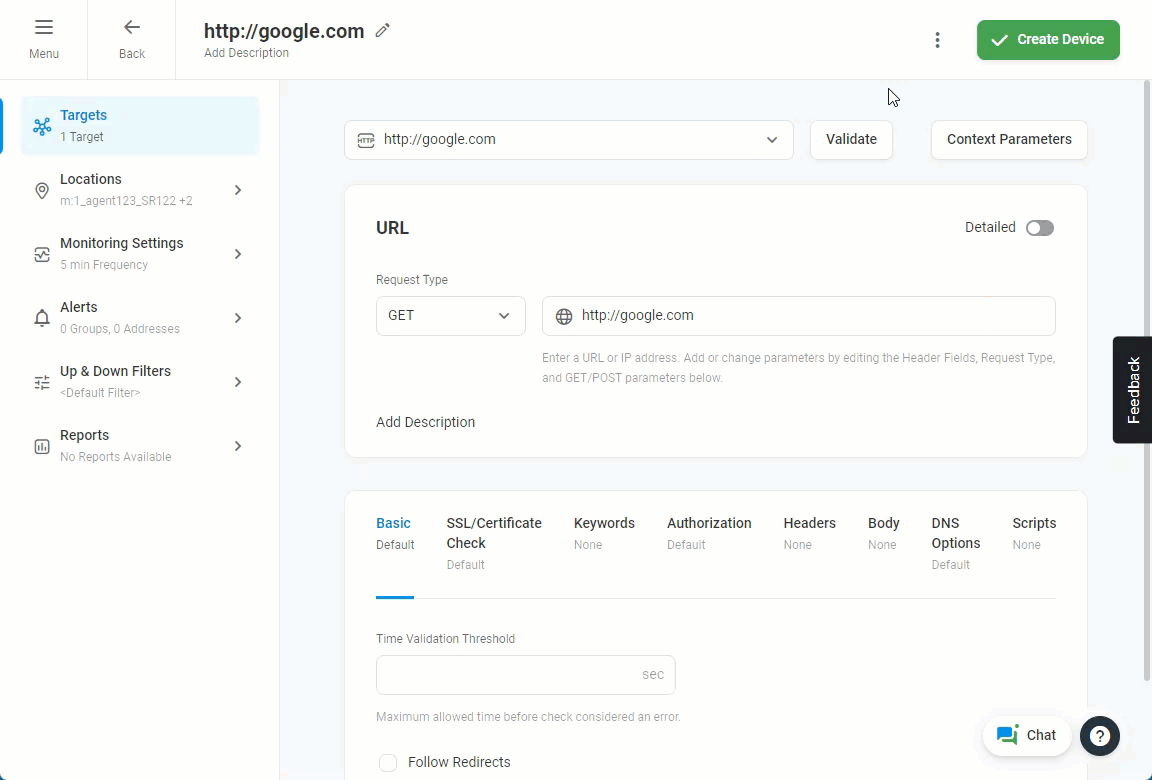Some types of monitoring devices (ServerView and WebView) can represent a collection of several monitoring targets (targets of internet infrastructure or web services monitoring) to be performed in sequence on a set schedule.
All monitoring targets within a device are included in the alerting and reporting communications, so that if any single target within a device experience errors, the alerts and reports will reflect those errors. Therefore, if one target in a device is reporting an error while another target in that device is reporting success, the device will be considered down unless you have applied a filter on the device to ignore the specific errors being reported.
All targets inherit the monitoring settings from the device under which they were created.
When to Set Up Multiple Targets Within a Device
Monitoring targets grouped by the device are meant to be directly related targets, such as individual page loads in a web transaction sequence. In essence, a multi-target device allows you to execute a flow that contains several requests, with each subsequent request using the data extracted from the responses to the previous one. A good example here would be the monitoring of Web API that requires authentication. In this case, you need to send two consecutive HTTP requests to the API. The first one will request an authentication token from the API. And the second one will use the token retrieved from the response to the first call to push payload to the target API.
Monitoring of “server farm” or “server pool” load balancing is another reason to set up a multi-target device. Upon configuring redundancy group monitoring, you may want to be alerted only when the threshold of redundancy fails. In this case, you can set it up under a single device. Leverage the Error detected in more than (X) tasks filter to set up the alert threshold.
-
Example. Website Transaction Monitoring
How to Create and Manage a Multi-Target Device
If you need to add another target to a device, from within the device edit screen, open the device Actions menu and select New Target.
If you need to modify several targets within a device, it’s recommended to clone the device and then make the necessary changes.


